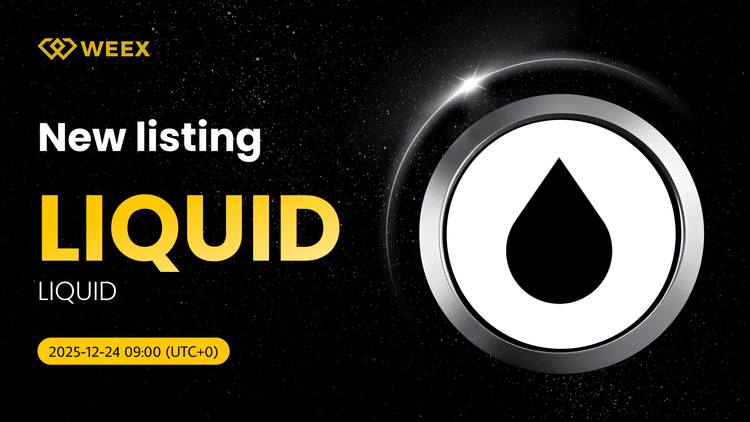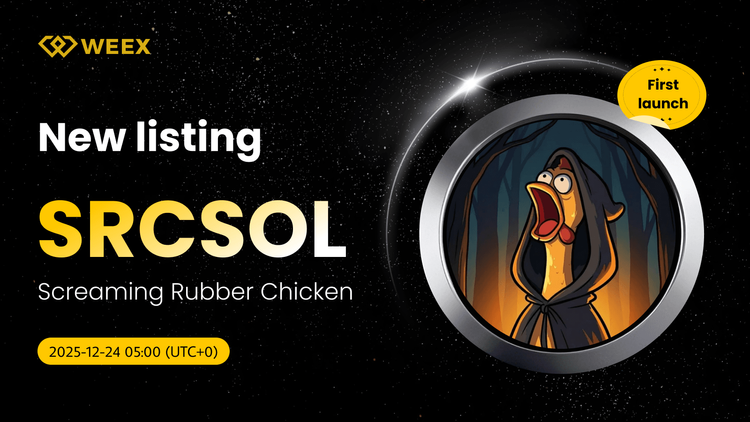Humanity Protocol ($H): Your Comprehensive Guide to Web3 Identity, Price Prediction & Investment Potential
Are you ready to unlock the future of digital identity? Just imagine, as you scroll through your favorite social media feeds, do you ever wonder: Is this post from a real human, or a sophisticated AI bot? Are the participants in those decentralized autonomous organizations truly unique individuals, or a swarm of automated accounts? This isn't just a philosophical musing; it's an increasingly urgent challenge impacting everything from online trust to the fair distribution of financial opportunities.
Seeking Authenticity: Why a Human Layer in Web3 is Crucial
In our rapidly evolving digital age, we find ourselves at a profound crossroads, grappling with a burgeoning crisis of trust. As artificial intelligence advances at an unprecedented pace, the lines between what is real and what is fabricated in digital content are blurring with alarming speed. The proliferation of bots and fake accounts makes it incredibly difficult to discern the authenticity of online interactions. This ambiguity doesn't just create technical headaches; it erodes the fundamental trust required for meaningful online engagement and transactions. If you can't verify who you're interacting with, the integrity of any digital system, be it a social media platform or a financial one, is fundamentally compromised. This pervasive and pressing need for a robust, verifiable "human layer" to underpin the entire internet makes solutions like Humanity Protocol incredibly timely, potentially serving as the bedrock for the next generation of digital interactions.
The core promise of Web3 is decentralization, user ownership, and a more equitable internet. Yet, its Achilles' heel lies in the ease with which anonymous wallets can be created, making it highly susceptible to what we call Sybil attacks. A Sybil attack is essentially when a single malicious actor creates multiple fake accounts or identities within a system to gain an unfair advantage, whether that's more voting power, more rewards, or more access.
This vulnerability fundamentally undermines the very principles Web3 champions, leading to manipulated governance votes, exploited airdrop rewards, and distorted community participation. If one person can control countless "identities," the spirit of decentralization is shattered. Therefore, for Web3 to truly deliver on its promise of fairness, openness, and user ownership, it absolutely must have a reliable way to verify unique, real human identities. Humanity Protocol is positioning itself as this indispensable "human layer," and its success could pave the way for the widespread, legitimate adoption of countless other Web3 applications.
Humanity Protocol ($H) is emerging as a pioneering solution to this very challenge, aiming to build this crucial "human layer for Web3." It offers a privacy-preserving, decentralized identity infrastructure that leverages cutting-edge palm recognition technology and zero-knowledge proofs to verify unique, real human identities without compromising personal data. This isn't just about stopping bots; it's about empowering you with complete control over your digital self.
Everything You Need to Know: What is Humanity Protocol ($H)?
What is Humanity Protocol ? Deconstructing the Vision of Decentralized Human Identity
Let's dive deep into what Humanity Protocol truly is. At its very core, it's a zkEVM Layer-2 blockchain meticulously built on Polygon's Chain Development Kit (CDK). You can think of it as a highly efficient, privacy-focused engine designed to power the next generation of digital identity.
The grand vision for Humanity Protocol is to become "the human layer for Web3," aiming to onboard the first billion real humans by providing a robust, Sybil-resistant network that safeguards your digital identity. This means it goes beyond simple logins, establishing a system where your unique humanity can be verified while your privacy remains absolutely intact.
Central to this vision is the concept of "Proof of Humanity" (PoH) – it's not just a feature, but a fundamental consensus mechanism that verifies and validates the uniqueness of users as human beings in a decentralized way. This strategic technical foundation suggests that Humanity Protocol isn't a fleeting trend but a serious project aiming to build core infrastructure. If successful, it could become as indispensable to Web3 as DNS is to Web2, enabling a vast array of new applications that require verifiable human interaction, and in doing so, accrue significant long-term value.
How Does Proof of Humanity Work? The Science Behind Palm Recognition and Zero-Knowledge Proofs
This is where the magic happens, and it's simpler than you might think! Humanity Protocol employs a two-phase approach to palm recognition, striking a balance between broad accessibility and cutting-edge security.
Phase 1: Easy Palm Print Verification via Smartphone
The first phase is all about inclusivity. You can verify your humanity using just your smartphone camera. This method captures your unique palm prints – those intricate lines, ridges, and creases that make your hand distinct.
This approach is designed for mass adoption, significantly lowering the barrier to entry. Crucially, your palm scan data is never stored directly by Humanity Protocol or any centralized entity. Instead, it's immediately encrypted into irreversible mathematical features and distributed across a decentralized network of "zkProofers" – these are specialized nodes that support the protocol.
Phase 2: Advanced Palm Vein Technology for Unparalleled Security
For even higher security and more precise identity verification, the second phase introduces specialized hardware devices equipped with infrared cameras. These "Humanity Scanners" map the unique vein patterns beneath your skin.
Why is this so powerful? Palm vein patterns can only be detected in a living body, making them virtually impossible to replicate or spoof. This provides robust "liveness detection," ensuring that the person undergoing verification is indeed a real, present, living human. This phase is designed for scenarios requiring the highest level of assurance, suitable for 1:N verification (identifying one person among a large database).
This phased approach is a clever strategy to overcome a common dilemma in biometric identity verification: how to achieve widespread user adoption without sacrificing security or privacy. Phase one lowers the barrier to entry, while phase two provides a pathway for scenarios requiring higher assurance. The consistent use of zero-knowledge proofs directly addresses privacy concerns. This design choice positions Humanity Protocol for true mass adoption. By making identity verification simple and private, it can attract millions of users who might otherwise be wary of biometric systems, potentially setting a new industry standard for how digital identity is managed in a privacy-first world.
The Role of Zero-Knowledge Proofs (ZKPs): Your Privacy Shield
Underpinning both these phases is the ingenious use of Zero-Knowledge Proofs (ZKPs). Imagine being able to prove a fact (like "I am a unique human") without revealing any of the underlying sensitive information that proves that fact (like your actual palm scan data). That's what ZKPs do!
This means your raw biometric data never leaves your device. It's transformed into a cryptographic proof that can be verified on-chain, ensuring your privacy is paramount while still achieving verifiable uniqueness.
When is the Best Time to Understand zkEVM? Humanity Protocol 's Foundation on Polygon's Cutting-Edge Layer 2
You might be wondering about the technological backbone behind all of this. Humanity Protocol isn't just built on any blockchain; it's built on Polygon's zkEVM Layer 2.
What is zkEVM? In simple terms, a zkEVM (Zero-Knowledge Ethereum Virtual Machine) Layer 2 is a powerful scaling solution for Ethereum. It processes transactions off the main Ethereum blockchain, using ZKPs to bundle thousands of transactions into a tiny proof that is then submitted back to Ethereum. This dramatically increases transaction speed and reduces costs, all while maintaining the security and compatibility of the Ethereum network.
For Humanity Protocol , this translates to unparalleled scalability, allowing it to handle millions, even billions, of users without congestion or exorbitant fees. It also ensures seamless interoperability within the vast and growing Ethereum ecosystem, opening doors for countless integrations.
Humanity Protocol 's choice of "Polygon's Chain Development Kit (CDK)" and a "zkEVM Layer 2 blockchain" is not an accidental technical decision. It aligns the project with one of the most promising scaling solutions in the Web3 space. zkEVMs are widely seen as the future for high-throughput, low-cost, and EVM-compatible applications, which are crucial for mass adoption. This technical foundation suggests that Humanity Protocol is built for long-term viability and broad integration. It aims to handle the scale required for a global "human layer," demonstrating foresight and a commitment to robust, future-proof infrastructure, which is a significant positive for its investment potential.
What Should You Do with Your Digital Identity? Embracing Sovereignty and Privacy
At the philosophical heart of Humanity Protocol is the concept of "Self-Sovereign Identity" (SSI). This fundamentally changes how you interact online.
Imagine a future where you have complete control over your digital credentials – your identity, your data. With SSI, you decide who gets access to what information, and under what circumstances. This stands in stark contrast to the centralized systems of Web2, where large corporations often control and monetize your personal data.
This approach aligns perfectly with global privacy standards like GDPR and CCPA, giving you peace of mind and true ownership of your digital self. Humanity Protocol 's emphasis on "Self-Sovereign Identity" (SSI), where "users control their data," and its alignment "with global privacy standards like GDPR and CCPA," explicitly addresses the issue of "centralized identity control in Web2." This directly targets a major pain point for internet users today: the lack of control over personal data and the privacy risks associated with centralized platforms. It's a fundamental shift from data owned by corporations to data owned by individuals. By offering a compelling, privacy-first alternative to traditional identity systems, Humanity Protocol taps into a massive global demand for data protection and user empowerment. This could drive its adoption far beyond crypto-native users, making it attractive to a broader market and even to enterprises seeking compliant and secure identity solutions.
The Power of Proof of Humanity: Real-World Applications and a Broader Future
How to Combat Bots and Ensure Fairness: Humanity Protocol 's Role in Sybil Attack Defense
Let's talk about a problem that plagues every corner of the internet: bots. A Sybil attack is when a single actor creates multiple fake accounts or identities in a system to gain an unfair advantage – whether that's more votes, more rewards, or more access.
Humanity Protocol 's core innovation lies in its ability to effectively thwart these attacks by verifying each user as a real, unique human through its biometric-based identity system.
Protecting DAOs: One Person, One Vote
Decentralized Autonomous Organizations (DAOs) are meant to be governed by their communities, but without Sybil resistance, they are vulnerable to manipulation. Humanity Protocol enables DAOs to confidently adopt a true "one-person, one-vote" model, ensuring fair and democratic decision-making processes.
Fair Airdrops: Rewarding Real Humans, Not Bots
Airdrops are a popular way for crypto projects to distribute tokens, but they are frequently exploited by bot farms. Humanity Protocol 's "Fairdrop" mechanism ensures that tokens are distributed only to verified unique humans, maintaining the integrity of the distribution process and fostering inclusive participation from genuine users.
Transforming DeFi and Social Media: Building Trust in Digital Interactions
The applications extend far beyond governance and airdrops. Proof of Humanity can prevent multi-wallet farming in DeFi, filter out bots and fake engagement in decentralized social media (SocialFi) applications, and ensure authentic interactions across countless Web3 applications. Imagine a social platform where every profile is verified as a real human – no more spam, no more deepfake profiles.
Sybil attacks undermine DAO governance, airdrops, and social platforms. Humanity Protocol through ensuring "each user is a real human" and "unique across the network" directly addresses this. Many Web3 applications are fundamentally flawed or limited because they cannot guarantee unique, real human participation. Humanity Protocol provides that missing piece, enabling these applications to function as intended – truly decentralized and fair. This positions Humanity Protocol as an enabler for the entire Web3 ecosystem. Its success isn't just about its own growth, but about empowering a vast array of decentralized applications to reach their full potential, creating powerful network effects and solidifying its position as a critical infrastructure layer.
Don't Miss That: Unlocking New Possibilities with Verifiable Credentials
Beyond simply proving you're human, Humanity Protocol takes identity verification to the next level with Verifiable Credentials (VCs). This means you can prove specific attributes about yourself – such as your age, educational qualifications, employment history, or even KYC compliance – without revealing any sensitive underlying personal information. It's all thanks to the magic of ZKPs!
From Education to KYC : Proving Attributes Without Revealing All
Imagine this: instead of submitting your full university transcript, you could simply present a verifiable credential proving you hold a specific degree. This streamlines verification processes for employers and institutions. In DeFi, it enables cost-effective and privacy-preserving KYC processes, allowing platforms to comply with regulations without centralizing vast amounts of user data. It can also be used for age verification for digital services, ensuring compliance without revealing your date of birth.
Real-World Asset (RWA) Tokenization: Bridging the Physical and Digital
One of the most exciting frontiers is Real-World Asset (RWA) tokenization. This refers to representing physical assets like real estate or art as tokens on a blockchain. By integrating Humanity Protocol 's Proof of Humanity, platforms can facilitate on-chain verification of physical asset ownership, enabling permissionless minting of RWA tokens. This bridges the gap between traditional finance and decentralized ecosystems, unlocking incredible new investment opportunities.
Humanity Protocol offers VCs for various attributes (age, education, KYC , employment) and supports diverse use cases like DeFi, DAOs, social media, and RWA tokenization. This demonstrates that Humanity Protocol is not a single-purpose tool but a modular identity platform. It can serve as a plug-and-play solution for any application requiring attribute verification, extending its reach beyond basic "humanness" checks. This versatility positions Humanity Protocol as an "identity-as-a-service" provider. Its ability to integrate across Web2, Web3, and real-world environments significantly expands its total addressable market and revenue potential, making it a highly attractive proposition for developers and enterprises seeking flexible, privacy-compliant identity solutions.
What Should I Do to Prepare for a Human-Centric Web3? Exploring Future Use Cases
Looking ahead, Humanity Protocol envisions itself as the foundational "human layer" for the entire Web3 ecosystem.
Imagine a future where fully on-chain games can prevent cheating and ensure fair play, where decentralized social media (DeSo) is free from bots and misinformation, where enterprise DeFi solutions can meet regulatory compliance with unprecedented privacy, and where Decentralized Physical Infrastructure (DePIN) systems can securely verify users and assets.
Understanding Humanity Protocol means understanding how a verified human layer can revolutionize every digital interaction, making it more authentic, secure, and equitable for everyone.
$H in Focus: Market Dynamics and the Price Rollercoaster
Don't Forget to Review: The KuCoin Listing and Its Explosive Impact
Let's talk about the market excitement! Humanity Protocol 's native token, $H, experienced an explosive surge following its listing on KuCoin on June 25, 2025. Reports indicate a gain of over 125%, with some even suggesting a staggering 423% rebound within 24 hours, pushing the price to approximately $0.1021.
This immediate price action is a classic example of the "listing effect." Being listed on a Tier-1 exchange like KuCoin instantly provides high liquidity, massive trading exposure, and global user access, creating immense demand for the token from millions of traders who suddenly gain access to it.
Accompanying the price surge was a dramatic increase in trading volume. Following the KuCoin listing, we saw over $220 million in trading volume within a single day, with some reports indicating a 75.16% boost in 24-hour trading volume to $483.26 million.
Such high trading volume, especially during a price rally, is a clear indicator of strong investor interest and market enthusiasm. It suggests that many participants are actively buying and selling, validating the token's presence in the market.
The KuCoin listing led to an immediate, significant price surge (125%-423%) and massive trading volume ($220M-$483M). Major exchange listings provide unparalleled visibility and liquidity, attracting substantial new capital and speculative interest. This often creates a "pump" effect driven by FOMO (Fear Of Missing Out). While beneficial for initial exposure and liquidity, such rapid, listing-driven pumps are often unsustainable. They tend to be followed by significant corrections as early investors take profits. This highlights the speculative nature of new token launches and the need for investors to look beyond initial hype.
What Should You Do When Prices Fluctuate? Navigating Volatility and Post-Listing Pullbacks
As is often the case with volatility in the crypto market, the initial euphoria was followed by a sharp correction. After its initial surge, the price of $H quickly plummeted by 87%, dropping from $0.1575 to approximately $0.036. This rapid decline left many questioning its sustainability, with some even expressing concerns about it potentially going to zero.
This kind of price fluctuation is a common occurrence for newly listed tokens in the cryptocurrency market. Following an initial exchange listing, early investors and airdrop recipients may choose to sell their tokens to realize profits, leading to significant selling pressure. For instance, within a day of the $H listing, its market value dropped to $0.019 due to selling pressure from airdrop recipients.
Analyzing MACD: A Glimpse into Market Momentum
To better understand these price movements, we can turn to technical analysis tools, such as the Moving Average Convergence Divergence (MACD) indicator. The MACD is a trend-following momentum indicator that shows the relationship between two moving averages.
When the MACD line (often the blue line) crosses above the signal line (often the red line) from below, it's generally considered a buy signal, indicating an emerging uptrend. Conversely, when the MACD line falls below the signal line, it can signal a potential downtrend. The MACD histogram (the difference between the MACD and its moving average) can also provide early signs that a crossover is about to happen.
In the case of $H, technical analysis showed that during its recent rally, the Relative Strength Index (RSI) soared to 91.61, indicating that the token was in overbought territory. Simultaneously, the Chaikin Money Flow (CMF) reading dropped, suggesting that buying pressure was fading. These technical signals often precede a price pullback. If this trend continues, the price of $H could fall below the $0.064 support level and potentially drop further to $0.039.
This technical analysis suggests that while market sentiment can be heavily influenced by short-term events like listings, underlying momentum and money flow often reveal a deeper picture of market health. Therefore, investors should combine fundamental analysis with technical indicators when navigating price fluctuations to make more informed decisions.
A Review of the Fairdrop: Controversy, Bots , and the Path to Trust
Before its listing, Humanity Protocol conducted a highly anticipated "Fairdrop" campaign, which attracted over 9 million wallets. Participants were promised a share of $H tokens for interacting with the testnet and verifying "Proof of Humanity" through palm biometrics. This campaign indeed generated significant interest and community buzz, with many users actively participating in daily check-ins and referral links to earn airdrop points, hoping for $H rewards.
9 Million Wallets: A Deep Dive into the Bot Problem
However, this airdrop also sparked considerable controversy. Terence Kwok, the founder of Humanity Protocol , admitted that out of the 9 million Human IDs created on their network, as many as 88% of the users might be bots. This startling figure triggered a crisis of trust, especially since the project's core mission is to prevent bot proliferation and verify real human identities.
Many users complained that they were excluded from the airdrop or received unfair token allocations. Some long-term community maintainers, content creators, and official Mod volunteers were even told they would receive "0 airdrop," while others reported receiving only $1 worth of airdrop despite dedicating a year to completing check-in tasks. Furthermore, users criticized the project for a lack of transparency, unclear eligibility criteria, and an opaque Sybil review process, even failing to disclose a referral penalty system while promoting the airdrop.
Addressing Concerns: How Humanity Protocol is Learning and Adapting
In response to these controversies, founder Terence Kwok stated that the team had noted the widespread feedback from the community and was seriously addressing complaints regarding fair airdrop distribution. He clarified that not all unverified users were necessarily bots and confirmed that just under one million users were verifiably human. He also mentioned that the team was directly engaging with some community members who had discrepancies between the number of referrals they generated and the number of users who completed verification. In a leaked conversation, Kwok even indicated he would increase a content creator's token allocation and asked him to inform the community about the strategy to combat bots.
Despite the project's efforts to address these issues, this bot scandal has undoubtedly posed a challenge to Humanity Protocol 's brand image and credibility. It highlights the immense difficulties even projects designed to combat bots can face in practice. For investors, this underscores the importance of not only looking at a project's vision and technology but also closely scrutinizing its execution capabilities and community management transparency. This incident, while painful, is undoubtedly a crucial learning curve for Humanity Protocol, and its future trajectory will depend on its ability to effectively resolve these issues, rebuild community trust, and prove the true efficacy of its "Proof of Humanity" mechanism.
Is it Worth Buying/Investing in $H? A Comprehensive Investment Guide
Why Consider Humanity Protocol ? The Power of Institutional Backing and Strategic Partnerships
Humanity Protocol has attracted significant support from prominent institutions, which undoubtedly adds to its credibility and long-term growth potential. In February 2024, it completed a strategic seed round with investments from Animoca Brands and Polygon co-founders Yat Siu and Sandeep Nailwal. This was followed by a $30 million funding round led by Kingsway Capital in May 2024. By January 2025, Pantera Capital and Jump Crypto jointly led a $20 million investment, valuing the company at $1.1 billion.
The involvement of such heavy-hitting investors, particularly industry leaders like Animoca Brands and Polygon Labs, signals strong confidence in Humanity Protocol 's ability to solve on-chain identity verification. Animoca Brands has played a pivotal role in fostering ecosystem growth and guiding Web3 best practices, while Polygon Labs has further enhanced the protocol's scalability and efficiency through Polygon CDK.
Moongate Acquisition: Expanding Real-World Utility
On June 10, 2025, Humanity Protocol announced its acquisition of Moongate, a Web3 event platform. Moongate was previously an NFT ticketing and membership platform, aiming to convert consumers' real-world assets and experiences into on-chain achievements for exclusive rewards, access, and community engagement.
The strategic significance of this acquisition lies in its integration of Moongate's infrastructure with HumanID, thereby transforming events like ticketing, festival celebrations, and conferences into PoH checkpoints. This means Humanity Protocol 's Proof of Humanity technology will be directly applied to real-world activities, significantly enhancing the real-world use cases and utility of $H. Through this move, Humanity Protocol isn't just staying in the digital realm; it's actively bringing Web3 identity verification into our daily lives, giving its token a broader value capture mechanism.
How to Evaluate Investment Potential: Comparing $H with Traditional Assets and Other Cryptocurrencies
$H as a Store of Value: The Digital Gold of the Human Layer?
Gold has long been revered as a reliable store of value, especially during times of economic uncertainty or currency devaluation. It possesses a physical form and remains beyond the control of any central authority. Bitcoin, too, has increasingly cemented its narrative as "digital gold," with its fixed supply and decentralized nature making it a compelling hedge against inflation.
Humanity Protocol 's $H token, while not directly a currency or commodity like Bitcoin, holds a unique store-of-value potential due to its position as a foundational Web3 identity infrastructure. If it successfully establishes itself as the essential "human layer" of Web3, its token's value will be intrinsically linked to the demand for verifiable human identity across the entire digital economy. In an era increasingly flooded with AI and bots, the demand for authenticity will become ever scarcer and more valuable. From this perspective, $H has the potential to become a new kind of "digital gold," representing the scarce value of "humanity" in the digital world.
Returns and Stability: Understanding the Risk-Reward Profile
In terms of investment returns, Bitcoin has delivered an exceptional performance over the past decade, standing out as the best-performing asset class, even outperforming the NASDAQ 100. However, this high reward comes with extreme volatility. It's not uncommon for Bitcoin's price to surge or plummet by 50% or more in short periods.
In contrast, real estate is generally considered a lower-risk, moderate-return investment, with relatively stable price movements and the potential for consistent rental income. The stock market falls somewhere in between, exhibiting less volatility than cryptocurrencies but more than real estate, and is influenced by economic and political factors.
Humanity Protocol 's $H token, as an emerging crypto asset, similarly exhibits characteristics of high risk and high reward. Its price experienced dramatic fluctuations immediately after its listing, from soaring 125%-423% to rapidly declining by 87%. This volatility might be daunting for conservative investors seeking stable returns, but for those with a higher risk tolerance and a pursuit of high growth potential, it could present an attractive opportunity.
Table: Humanity Protocol : Opportunities and Challenges
| Category | Opportunities | Challenges |
| Core Value Proposition | Addresses the fundamental problem of bots and fake identities in Web3, meeting an urgent need for verifiable human identity. | The actual effectiveness and efficiency of bot mitigation still require long-term validation. |
| Technological Innovation | Privacy-preserving palm recognition technology (two-phase), zero-knowledge proofs, and Polygon zkEVM Layer 2 foundation, balancing accessibility, security, and scalability. | Biometric data collection may face cross-border compliance risks and regional restrictions. |
| Market Potential | As Web3's "human layer," it can be widely applied in DAOs, DeFi, social media, RWA tokenization, etc., indicating a massive market. | A complete economic loop and value capture mechanism are not yet fully in place, posing a risk of "subsidize-and-dump." |
| Institutional Support | Backed by top-tier institutions like Animoca Brands, Polygon Labs, Pantera Capital, and Jump Crypto, with a valuation of $1.1 billion. | Early investor token unlock transparency is insufficient, which may raise dilution concerns. |
| Strategic Development | Acquisition of Moongate expands real-world application scenarios, enhancing utility. | Founder's past entrepreneurial history (Tink Labs collapse) may affect market confidence. |
| Community & Airdrop | Attracted a large user base through "Fairdrop," building an early community. | Airdrop heavily impacted by bots, leading to community questions and dissatisfaction regarding fairness. |
| Liquidity & Tradability | Listed on major exchanges like KuCoin, providing high liquidity and global accessibility. | Newly listed token prices are highly volatile, with potential for significant short-term pullbacks. |
Investors should carefully weigh these opportunities and challenges against their own risk tolerance and investment objectives.
Don't Forget to Evaluate Risks: Navigating the Challenges of Investing in $H
Any investment comes with risks, and the cryptocurrency market is particularly known for them. When considering Humanity Protocol ($H), it's crucial to understand its potential challenges.
The Founder's Past: Learning from the Tink Labs Journey
Terence Kwok, the founder of Humanity Protocol , previously founded a company called Tink Labs. Established in 2012, Tink Labs aimed to help travelers avoid expensive roaming charges by providing free smartphones (named Handy) to hotels. The company gained favor from giants like SoftBank and Foxconn, raising $200 million in investment by 2016 and briefly achieving unicorn status.
However, Tink Labs' meteoric rise was matched by a swift decline. The rapid decrease in roaming charges and the widespread adoption of personal smartphones significantly reduced the demand for Handy, and its business model failed to adapt to market changes. Coupled with aggressive expansion and unsustainable costs, Tink Labs began shutting down operations and laying off 80% of its staff in 2019, eventually undergoing bankruptcy liquidation in 2020, vaporizing over $170 million in investment funds. A former HR executive at Tink Labs candidly stated, "I never expected it to last long, but I also didn't think it would collapse so quickly. Kwok only cares about making money".
This "unicorn fall" experience undoubtedly raises questions about Terence Kwok's credibility and the long-term stability of Humanity Protocol . While a founder's past failures don't necessarily predict the failure of a new project, it reminds investors to be cautious about the project's business model, expansion strategy, and the team's execution capabilities. Humanity Protocol's core mission is to solve digital identity, which is fundamentally different from Tink Labs' hardware rental model. It's important to observe how the team learns from past experiences and builds a more sustainable and transparent operational model for the current project.
Regulatory Environment: What Could Impact Humanity Protocol ?
The regulatory landscape surrounding cryptocurrencies is constantly evolving globally, and this uncertainty is a universal risk faced by all crypto projects. Different countries and regions have adopted vastly different regulatory approaches, with some embracing cryptocurrencies with clear guidelines, while others impose strict controls or outright bans.
For Humanity Protocol , the nature of its biometric data collection could introduce additional regulatory challenges. Although the project emphasizes the use of zero-knowledge proofs to avoid direct storage of raw biometric data, regulators might still classify it as "biometric data collection," potentially leading to regional restrictions or prohibitions. For example, the EU's MiCA regulation, the SEC and CFTC's regulatory actions in the U.S., and China's strict ban on cryptocurrencies could all impact Humanity Protocol's global operations and adoption.
In the future, regulators are likely to focus more on consumer protection, anti-money laundering (AML), and combating the financing of terrorism (CFT) measures, imposing stricter requirements on stablecoins and DeFi platforms. As an identity verification infrastructure, Humanity Protocol may need to comply with these constantly evolving compliance standards, which could increase its operational burden and complexity. Investors need to closely monitor global regulatory dynamics, as any significant regulatory changes could have a profound impact on the value of $H and the project's future.
Market Volatility: Preparing for the Ups and Downs
The cryptocurrency market is renowned for its extreme volatility, and Humanity Protocol 's $H token is no exception. Its price experienced a dramatic surge and sharp decline in a short period after its listing, fully demonstrating this volatility.
This volatility can be caused by various factors, including market sentiment, macroeconomic events, regulatory news, whale activity, and the project's own developments and controversies. For instance, the deposit of a large number of $H tokens to exchanges by major holders like Jump Trading has fueled speculation about profit-taking or market manipulation, thereby affecting the price.
For investors, this means that your investment value may fluctuate wildly in a short period, and there is a significant risk of losing your entire investment. The liquidity of crypto assets is also often lower than traditional financial instruments, which can exacerbate price volatility and make it more difficult to sell. Therefore, when investing in $H or any cryptocurrency, it is essential to only invest funds you can afford to lose and to have a clear understanding of the inherent uncertainties of the market.
When is the Best Time to Invest? Long-Term Vision vs. Short-Term Speculation
Deciding when to invest in $H is a complex question that requires balancing its long-term vision with short-term market speculation.
From a long-term vision perspective, Humanity Protocol aims to solve a fundamental problem in Web3: the authenticity of digital identity. In an AI-driven, bot-ridden future, the demand for verifiable human identity will become paramount. If Humanity Protocol can successfully establish its "human layer" infrastructure and achieve widespread adoption across DAOs, DeFi, social media, RWA, and other sectors, its long-term value potential is immense. The support from institutional investors and strategic acquisitions like Moongate also indicate its long-term growth ambitions. For investors who believe in the long-term evolution of Web3 and the importance of digital identity, this could be a compelling long-term holding opportunity.
However, from a short-term speculation perspective, $H has already demonstrated extreme volatility. The initial price surge after listing, followed by a sharp correction, as well as uncertainties stemming from airdrop controversies and the founder's past experiences, make short-term trading highly risky. Technical indicators like MACD may also signal short-term pullback risks. For short-term traders seeking quick profits, this might be a high-risk, high-reward market, but it demands a high level of market analysis skills and risk management strategies.
Table: Humanity Protocol ($H) Price Prediction Outlook (2025-2030)
| Year | Minimum Price (USD) | Average Price (USD) | Maximum Price (USD) | Notes |
| 2025 | $0.05 | $0.10 | $0.15 | Market confidence expected to gradually recover after addressing airdrop controversies and roadmap progress, but short-term volatility persists. |
| 2026 | $0.12 | $0.20 | $0.35 | As its "Proof of Humanity" mechanism matures and more real-world applications are adopted, value is expected to grow steadily. |
| 2027 | $0.25 | $0.40 | $0.60 | Demand for decentralized identity continues to grow, and Humanity Protocol may become a critical infrastructure. |
| 2028 | $0.50 | $0.80 | $1.20 | As the Web3 ecosystem expands and AI challenges intensify, its position as the "human layer" will be further solidified. |
| 2029 | $0.90 | $1.50 | $2.50 | Widespread ecosystem integration and global user adoption, pushing its market valuation to new highs. |
| 2030 | $1.80 | $3.00 | $5.00+ | Becomes a core Web3 identity infrastructure, its value closely tied to the growth of the entire digital economy. |
Please note: The cryptocurrency market is highly speculative. The price predictions above are for informational purposes only and do not constitute investment advice. Actual prices may vary significantly due to market conditions, technological developments, regulatory changes, and macroeconomic factors. Always conduct your own research and consult with a professional financial advisor before making any investment decisions.
Ultimately, investment decisions should align with your personal risk tolerance, investment goals, and time horizon. If you are confident in Humanity Protocol 's long-term vision and can withstand short-term volatility, then it might be a good time to consider a long-term investment as the project addresses current challenges and demonstrates the effectiveness of its core technology. But if you are a short-term speculator, you will need a deep understanding of market dynamics and the ability to react quickly.
Humanity Protocol ($H) Price Prediction 2025-2030: Charting the Future
How to Make Cryptocurrency Price Predictions: Acknowledging the Art and Science
Predicting cryptocurrency prices is like navigating through a dense fog, a blend of both art and science. It involves a complex analysis of historical data, market sentiment, technological developments, macroeconomic trends, and the regulatory environment. While no one can provide 100% accurate predictions, we can, based on existing information and industry models, paint a picture of potential future price movements.
Bitcoin's historical performance provides us with invaluable lessons. Over the past 13 years, Bitcoin has achieved an impressive compound annual growth rate of 102.79%, despite its high standard deviation of 151.38%, indicating extreme volatility. Bitcoin's price surges are often closely linked to supply squeezes, institutional capital inflows, and halving events. For example, the 2024 Bitcoin halving event and the approval of spot ETFs significantly propelled its price upwards. These factors can also, to some extent, influence the altcoin market, including projects like $H.
For an emerging project like Humanity Protocol , its price prediction must not only consider broader crypto market trends but also deeply analyze its own development trajectory, technological implementation, community building, and how it addresses the challenges it currently faces.
2025 $H Outlook: Building on Foundational Growth
Looking ahead to 2025, the price trajectory of $H will be influenced by several key factors. Firstly, Humanity Protocol 's ability to effectively resolve its Fairdrop controversies and the bot issue will have a decisive impact on market confidence. If the project can rebuild community trust through transparent communication, fair allocation adjustments, and the proven effectiveness of its "Proof of Humanity" mechanism, this will lay a solid foundation for $H's price stability and growth.
Secondly, the progress of its technological roadmap is crucial. As palm recognition technology (especially the second phase of palm vein recognition) further matures and finds widespread application, along with the stable operation of its zkEVM Layer 2 network and the integration of more dApps, the intrinsic value of $H will increase. The expansion of real-world use cases brought about by the Moongate acquisition will also provide new growth momentum.
Considering Bitcoin's potential to reach $130,000 to $150,000 by late 2025, and the overall bullish sentiment in the crypto market, if Humanity Protocol can execute its plans, its token $H is poised for robust growth in 2025. We anticipate that the minimum price for $H in 2025 could be around $0.05, with an average price potentially reaching $0.10, and a maximum price possibly touching $0.15. This reflects a re-evaluation by the market of its fundamental value and future potential after addressing initial challenges.
2026-2030 $H Outlook: Long-Term Potential and Adoption Scenarios
Looking further ahead to 2026 through 2030, Humanity Protocol 's long-term potential will depend on its ability to truly become the core "human layer" of Web3 and achieve widespread adoption.
- 2026: As its "Proof of Humanity" mechanism further matures and more real-world applications are implemented, such as widespread use in decentralized governance, DeFi compliance, and social media, market recognition of its value will further increase. We project that the minimum price for $H in 2026 could be around $0.12, with an average price potentially reaching $0.20, and a maximum price possibly touching $0.35.
- 2027: The demand for decentralized identity continues to grow, especially in the context of increasingly sophisticated AI-driven forgery techniques. Humanity Protocol could become a critical infrastructure for solving trust issues. The widespread application of its verifiable credentials will enable it to play a larger role in education, employment, and KYC verification. We project that the minimum price for $H in 2027 could be around $0.25, with an average price potentially reaching $0.40, and a maximum price possibly touching $0.60.
- 2028: As the Web3 ecosystem expands and AI challenges intensify, Humanity Protocol 's position as the "human layer" will be further solidified. If it can successfully attract a large number of developers to build applications on its platform and form strong network effects, its value will significantly increase. We project that the minimum price for $H in 2028 could be around $0.50, with an average price potentially reaching $0.80, and a maximum price possibly touching $1.20.
- 2029: Widespread ecosystem integration and global user adoption will drive its market valuation to new highs. If Humanity Protocol can achieve its vision of "empowering billions of people with self-sovereign identity," its token value will reflect its foundational role in the digital world. We project that the minimum price for $H in 2029 could be around $0.90, with an average price potentially reaching $1.50, and a maximum price possibly touching $2.50.
- 2030: In the long term, some experts predict Bitcoin might reach $500,000 or even higher. If Humanity Protocol successfully overcomes all challenges and becomes a core Web3 identity infrastructure, its value will be closely tied to the growth of the entire digital economy. In the most optimistic scenario, its token could reach several dollars in value. We project that the minimum price for $H in 2030 could be around $1.80, with an average price potentially reaching $3.00, and a maximum price possibly touching $5.00 or even higher.
These predictions are based on the assumption that Humanity Protocol successfully executes its roadmap, effectively resolves current issues, and seizes the immense market opportunities in the digital identity space. However, the inherent uncertainties of the cryptocurrency market, regulatory changes, technological competition, and macroeconomic fluctuations can all significantly impact actual prices.
Where to Buy $H and How to Buy Safely: Your Gateway to Human-Centric Web3 through WEEX
If you're excited about Humanity Protocol 's vision and potential, and you want to participate in this human-centric Web3 movement, then choosing a secure, reliable trading platform is paramount.
Why WEEX is Your Trusted Partner for Innovative Crypto Projects
WEEX stands as a trusted platform, dedicated to providing users with a secure and efficient cryptocurrency trading experience. It actively supports innovative projects like Humanity Protocol , offering users convenient access. The WEEX platform prioritizes user experience and security, ensuring your digital assets are well-protected.
Seamless Experience: How to Buy $H on WEEX
The process of buying $H on WEEX is designed to be straightforward. First, you'll need to create an account and complete the necessary identity verification (KYC ) process, to ensure transaction compliance and security. Once registered, you can choose from various deposit methods, such as bank transfers or funding your account with other cryptocurrencies. After your funds arrive, you can navigate to the trading interface, search for the $H token, and place a market or limit order based on your investment strategy. WEEX provides an intuitive user interface and robust trading tools, allowing you to manage your investments with ease.
WEEX is committed to offering an exceptional trading environment, allowing you to confidently explore and invest in emerging crypto projects. Through WEEX, you can become a part of building a more authentic and decentralized digital world.
Conclusion: Humanity Protocol and the Future Path of Web3
We've embarked on a deep dive into the world of Humanity Protocol ($H), from its ambitious vision as Web3's "human layer" to its innovative palm recognition technology and zero-knowledge proofs, and through its volatile market performance and the challenges it faces. This project aims to solve one of the most fundamental problems of the digital age: how to verify real human identity and rebuild trust in an increasingly complex digital landscape.
Humanity Protocol , with its unique two-phase biometric approach and robust technical foundation built on Polygon zkEVM Layer 2, shows immense potential to provide much-needed Sybil attack resistance for decentralized autonomous organizations, fair airdrops, DeFi, and social media. Its introduction of verifiable credentials further expands the utility of digital identity, allowing it to be applied in privacy-preserving ways across various real-world scenarios, even bridging physical assets with the blockchain world.
However, like all emerging technologies and crypto projects, Humanity Protocol also faces its share of challenges. The dramatic price volatility after its listing, the controversy surrounding bot proliferation in its airdrop campaign, and the questions raised by the founder's past entrepreneurial ventures all serve as reminders that investing in cryptocurrency requires prudence and a clear understanding of the risks. These challenges are not insurmountable, but how the project addresses and resolves them will profoundly impact its future trajectory.
Institutional investors such as Animoca Brands, Polygon Labs, Pantera Capital, and Jump Crypto's support, as well as the strategic acquisition of Moongate, all signal market recognition of Humanity Protocol 's long-term vision. If the project can successfully execute its roadmap, continue to innovate, and effectively resolve its operational and trust issues, it indeed has the potential to become an indispensable part of Web3 infrastructure, laying the groundwork for a more authentic and equitable digital future.
Ultimately, Humanity Protocol 's journey is part of the broader evolution of Web3. It represents our collective endeavor to build a digital world that is not only technologically advanced but also human-centric, privacy-respecting, and trust-driven. Your engagement and attention will collectively shape this exciting future.
You may also like

Introducing 0G: Complete Guide to $0G and Airdrop Opportunities
0G ($0G) is the world's first Decentralized AI Operating System (DeAIOS), a modular Layer-1 blockchain designed to power scalable, on-chain AI applications. Learn its tokenomics, ecosystem impact, and how to claim free tokens in the WEEX $50,000 LISA airdrop until Jan.02 2026!

What is Nockchain (NOCK) Coin?
Today, we delve into an exciting new listing: the Nockchain (NOCK) token, freshly available for trading on the…

WEEX Futures Launches RateX (RTX) Coin & RTX USDT Contract
Trade the new RateX (RTX) Coin and RTX USDT perpetual contract on WEEX. Access high leverage and low fees. Register on WEEX for the latest futures listings.

LIQUID Coin Price Prediction & Forecasts for December 2025 – Potential Rally Amid Meme Hype?
Just a day after its launch on December 24, 2025, LIQUID Coin has already stirred up buzz in…

What is Liquid (LIQUID) Coin?
The Liquid (LIQUID) token listed on WEEX is making waves in the crypto world. With trading officially starting…

SOTER (Soter) Coin Price Prediction & Forecasts for December 2025: Can This New Meme Token Sustain Its Launch Momentum?
SOTER (Soter) Coin burst onto the scene on December 24, 2025, as a fresh meme token on the…

What is Soter (SOTER) Coin?
The Soter (SOTER) coin has made a significant splash in the crypto scene with its recent listing on…

Screaming Rubber Chicken (SRCSOL) Coin Price Prediction & Forecasts for December 2025 – Could It Surge 200% Amid Meme Coin Hype?
The Screaming Rubber Chicken (SRCSOL) Coin, a fresh entrant in the meme coin space on Solana, burst onto…

What is Screaming Rubber Chicken (SRCSOL) Coin?
The world of cryptocurrency is buzzing with excitement as a new meme token, Screaming Rubber Chicken (SRCSOL), has…

LIQUID USDT Pair Listed: Trade LIQUID Coin on WEEX Spot
LIQUID USDT spot trading is live on WEEX Exchange. Discover the new LIQUID (LIQUID) Coin listing, check the schedule, and start trading this meme token now.

Trade SRCSOL USDT: Screaming Rubber Chicken Coin on WEEX Spot
Screaming Rubber Chicken (SRCSOL) Coin is new listed on WEEX Exchange. Access the SRCSOL USDT trading pair now. Discover the viral meme token premiere.

SOTER USDT Spot Trading Now Live on WEEX Exchange
Soter (SOTER) Coin is newly listed on WEEX Exchange. Start SOTER USDT spot trading today with the latest Meme token from the Soter Ecosystem.

Nockchain (NOCK) Coin Price Prediction & Forecasts for December 2025: Surging 14% Amid Meme Token Buzz
Nockchain (NOCK) Coin has just hit the scene on the Base chain, launching today at 12:00 UTC on…

What is Nock (NOCK) Coin?
Nock (NOCK) Coin is the native asset of the Nockchain ecosystem, a unique blockchain designed to merge community…

JPMorgan Chase Tokenized Stock (Ondo) (JPMON) Coin Price Prediction & Forecasts for December 2025 – Steady Climb Post-Launch
The JPMorgan Chase Tokenized Stock (Ondo) (JPMON) Coin just hit the market on December 23, 2025, offering tokenized…

REALGARRYTAN Coin Price Prediction & Forecasts for December 2025 – Fresh Launch Sparks Meme Token Rally Potential
The REALGARRYTAN Coin, a new meme token tied to Garry Tan and launched on the Base chain just…

What is RealGarryTan (REALGARRYTAN) Coin?
The cryptocurrency market constantly evolves, offering new investment opportunities for enthusiasts and traders. Recently, the RealGarryTan (REALGARRYTAN) token…

Walmart Tokenized Stock (Ondo) (WMTON) Coin Price Prediction & Forecasts for December 2025 – Could It Rebound After Recent Dip?
As of December 2025, Walmart Tokenized Stock (Ondo) (WMTON) Coin has just hit the market, offering tokenized exposure…
Introducing 0G: Complete Guide to $0G and Airdrop Opportunities
0G ($0G) is the world's first Decentralized AI Operating System (DeAIOS), a modular Layer-1 blockchain designed to power scalable, on-chain AI applications. Learn its tokenomics, ecosystem impact, and how to claim free tokens in the WEEX $50,000 LISA airdrop until Jan.02 2026!
What is Nockchain (NOCK) Coin?
Today, we delve into an exciting new listing: the Nockchain (NOCK) token, freshly available for trading on the…
WEEX Futures Launches RateX (RTX) Coin & RTX USDT Contract
Trade the new RateX (RTX) Coin and RTX USDT perpetual contract on WEEX. Access high leverage and low fees. Register on WEEX for the latest futures listings.
LIQUID Coin Price Prediction & Forecasts for December 2025 – Potential Rally Amid Meme Hype?
Just a day after its launch on December 24, 2025, LIQUID Coin has already stirred up buzz in…
What is Liquid (LIQUID) Coin?
The Liquid (LIQUID) token listed on WEEX is making waves in the crypto world. With trading officially starting…
SOTER (Soter) Coin Price Prediction & Forecasts for December 2025: Can This New Meme Token Sustain Its Launch Momentum?
SOTER (Soter) Coin burst onto the scene on December 24, 2025, as a fresh meme token on the…
Popular coins
Customer Support:@weikecs
Business Cooperation:@weikecs
Quant Trading & MM:[email protected]
VIP Services:[email protected]
